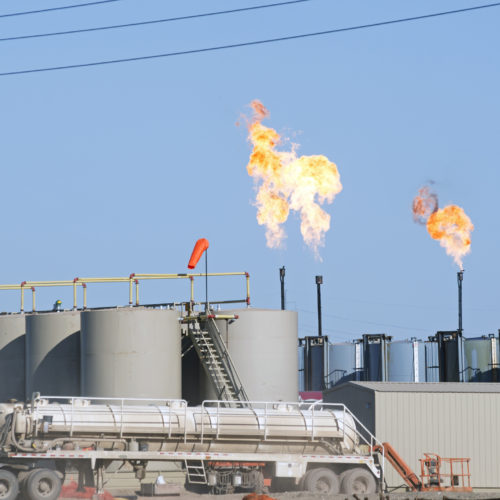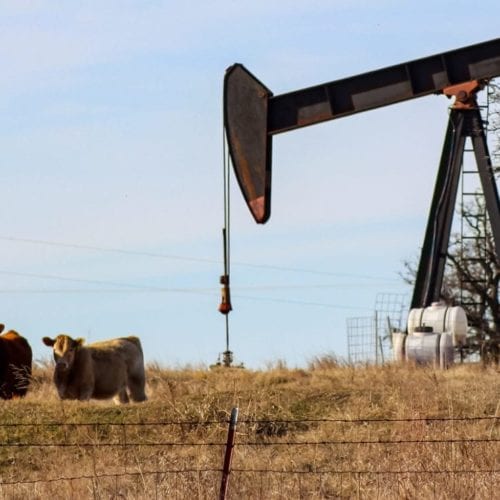Photo: Siggy Nowak, Pixabay: https://pixabay.com/photos/pigs-hogs-animals-snout-hog-swine-3669654/

Methane, Hog Manure, and a Net-Zero Pledge
By addressing a gas that can super-charge warming, Dominion Energy is breaking new ground. And its plans hinge on an unusual source of power.
Dominion Energy made big news last week with its pledge to go net-zero by 2050. It is one of the largest utilities to make this sort of pledge to date, with roughly the same number of customers as power giant Duke Energy. And this is part of a wave in the utility sector, coming only a few weeks after Arizona Public Service announced its net zero pledge.
Like many other utility pledges, this move is connected to pending policy change that would force Dominion to decarbonize. The definitive passage of the landmark Virginia Clean Economy Act through Virginia’s state house on the same day as Dominion announced its plan was probably not a coincidence.
However, like the pledge by Xcel which led the way in the utility sector, this move goes beyond a single state-level policy; Dominion operates in 18 states. And here it is important to again note the role of other pressures, as the power and gas company has been criticized for its role in pushing the Atlantic Coast Pipeline.
This points to what is different about Dominion’s pledge. It is one thing for a utility that supplies electricity to announce plans to clean its fleet, but it is a different matter for utilities that also supply fossil fuels for heat as the basis of a business.
Among the utilities making net zero or 100 percent clean energy pledges both DTE and Xcel both supply gas to their customers, but Dominion is the second-largest supplier of gas in the nation, with 3.3 million customers in five states as opposed to 1.8 million for Xcel. The company also owns roughly 100,000 miles of natural gas pipelines and is the second-largest operator of gas storage in the nation.
It is also a novel development that this pledge addresses not only CO2, but also methane (CH4), a greenhouse gas which is far more potent on short timeframes, and which as a result has the potential to super-charge short-term warming. And its plans around methane involve sources that have not received much attention to date.
However, at the end of the day Dominion’s plans address a narrow portion of its carbon pollution, and leave a massive hole around the emissions involved in the sale of gas to its customers.
Why Methane?
Methane is the primary component of the natural gas that Dominion and other utilities deliver to their customers. When burned, natural gas produces less CO2 emissions per unit of power delivered than coal, and the shift from coal to gas has been the primary factor in the fall in US power sector CO2 emissions over the past two decades.
However, it is a completely different story when natural gas methane escapes directly into the atmosphere before it is combusted for electricity generation or heat. According to the Intergovernmental Panel on Climate Change, methane is more than 80 times as powerful on a 20-year timeframe, and roughly 30 times as powerful on a 100-year timeframe. If much of this methane escapes when natural gas is extracted from the ground, moved through pipelines, and distributed into buildings, it can have a big impact on climate, and can call into question how preferable it is to coal as an energy resource.
Compounding the problem is a lack of clarity around the volume of methane that escapes during gas production, transmission and distribution. In response to this challenge, RMI is working with SYSTEMIQ to bring more transparency to the methane emissions picture with the Climate Action Engine, an analytic tool designed to pinpoint where methane is escaping from oil and gas operations so that producers can take swift action. The institute is also working with gas suppliers and buyers to establish a certification standard for natural gas produced with minimal methane emissions, so buyers can source an environmentally preferable product.
But the oil and gas industry is not the only source of natural gas, which is also emitted as a waste product from landfills, water treatment and industrial animal farming. Dominion is now looking toward this “biogas” as another tool in its decarbonization toolbox.
Biogas and Hog Manure
Dominion’s pledge to get to net zero in terms of both CO2 and methane is not the company’s first move in this arena; the company estimates that it has already reduced methane emissions by 25 percent versus 2010 levels. It now plans 65 percent net reductions in emissions by 2030 and 80 percent by 2040.
Dominion is planning to tackle its methane emissions on two fronts. First, it will focus on reducing methane from three sources within its control: gas venting that occurs during maintenance and inspection activities, replacing aging equipment prone to leakage, and expanding leak detection programs. Second, recognizing that it may be unable to eliminate methane leaks entirely, it plans to offset remaining methane emissions by procuring biogas, sometimes called renewable natural gas (RNG).
This is a critical and oft-overlooked difference between net-zero and zero-emissions pledges. The latter means eliminating all sources of emissions, and the former can include offsets. Dominion’s language in this regard is clear. “The company has committed to invest in carbon-beneficial RNG projects that will capture an amount of methane from US farms at least equivalent to any remaining methane and carbon dioxide emissions from the company’s natural gas operations,” reads Dominion’s announcement.
Cate Hight, a principal with RMI’s Industry Practice, notes that there are limits to this approach. “Investing in biogas capture projects is a good thing, as these projects reduce methane emissions and provide an alternative fuel source to conventional natural gas in certain geographies,” asserts Hight. However, such investments “don’t solve the biggest methane problem we currently have on our hands, which is methane released during conventional oil and gas production.”
And if Dominion is stressing the role of biogas, there may be other factors at play. During Hurricane Florence in 2018, two lagoons of hog manure overflowed in North Carolina, which caused seven million gallons of hog waste to spill and eventually flow into the South River.
The lagoons belonged to North Carolina’s largest hog farmer, Smithfield, and doubtless did not improve relations with its “downstream” neighbors. Less than two months later the company established a partnership with Dominion to capture the methane from its operations—including capped lagoons. This partnership has since expanded to a $500 million deal for Smithfield to supply Dominion with biogas.
Plugging the Leaks
In the end, RMI’s Cate Hight says that this is an important development for the movement to address the methane emissions associated with natural gas production and use, which she says has been building since the first “responsible natural gas” deal in 2018.
It remains to be seen if Dominion will include in its future plans efforts to eliminate or offset the methane emissions associated with the whole value chain of the natural gas it uses, including the gas production segment, which its recent announcement does not address.
These emissions are a major focus of the major oil producers, including BP, which last week announced a zero-carbon pledge that includes plans to install methane measurement at all of its major oil and gas processing sites by 2023. Hight notes major gas buyers such as Dominion have an opportunity to increase the pressure on gas suppliers to address their methane emissions and enhance the effectiveness of such zero-carbon pledges.
“This demand for a lower-methane emission natural gas product, combined with increased transparency about where methane emissions are happening, is going to be a really winning combination,” states Hight.
However, it is important to not let Dominion’s work on methane leaks cloud larger issues. The utility’s plan to reach net zero is not the same as the zero-carbon pledges of electric utilities; under Dominion’s plan, it will still sell gas to end-customers, and even if Dominion plugs all the leaks in its transmission and distribution networks, its operations will still result in emissions at the point of combustion.
In addition, Dominion’s commitment does not take into account the methane emissions associated with gas production, which account for over 50 percent of the methane problem in the oil and gas value chain. The utility also remains a member of the American Gas Association, which has led the fight against building electrification.
So while the hogs are now playing their part, there are bigger fish to fry.

